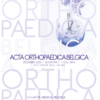An evaluation of intra and inter observer reliability of the five used classification systems of tibial plateau fractures
Tibial plateau fractures; 3-column; inter-observer; intraobserver; reliability
Published online: Feb 17 2023
Abstract
We aimed to evaluate the intraobserver and inter- observer variations of the five primary classification systems for assessing tibial plateau fractures via standard X-Ray, biplanar and reconstructed 3D CT images. Using anteroposterior (AP) – lateral X-Ray, and CT images, one hundred tibial plateau fractures were evaluated and classified by four surgeons according to the AO, Moore, Schatzker, modified Duparc, and 3-column classification systems. Each observer evaluated the radiographs and CT images separately – listed each time randomly – on a total of 3 occasions: with an initial evaluation, and then subsequently in weeks 4 and 8. Intra- and interobserver variabilities were assessed using the Kappa statistics. Intra- and interobserver variabilities were 0.55 ± 0.03 and 0.50 ± 0.05 for AO, 0.58 ± 0.08 and 0.56 ± 0.02 for Schatzker, 0.52 ± 0.06 and 0.49 ± 0.04 for Moore, 0.58 ± 0.06 and 0.51± 0.06 for the modified Duparc, and 0.66 ± 0.03 and 0.68 ± 0.02 for the 3-column classification. Evaluation of tibial plateau fractures using 3-column classification in conjunction with radiographic classifications has higher levels of consistency compared to radiographic classifications alone.
